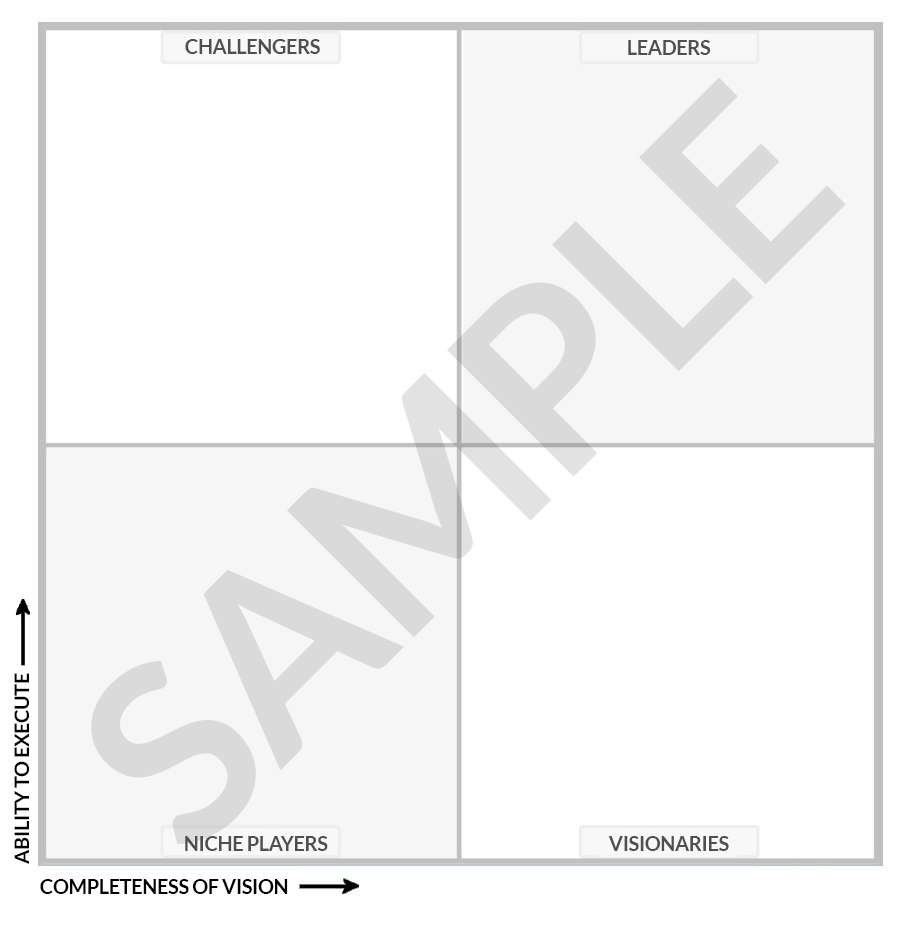Behind the Curtain: The Path to Becoming a Leader in a Gartner Magic Quadrant
| Contact Us | |
| Free Demo | |
| Chat | |
In anticipation of the soon-to-be-released Gartner Magic Quadrant for Enterprise Data Loss Prevention, here's a behind the scenes look at the submission process.
At Digital Guardian we are eagerly awaiting the release of the 2016 Gartner Magic Quadrant for Enterprise Data Loss Prevention (DLP), which is expected at the end of this month. While the DG platform offers a broad array of data protection options beyond traditional DLP, this is still a critical report for our business.
Any company who participates in the famed Gartner Magic Quadrant reports has one goal – be in the “Leader Quadrant” – but doing that is no small feat. A lot of collaboration across departments is required to produce a successful submission and this year I quarterbacked that effort for Digital Guardian. To be honest, it's hard work, however, it is well worth the time and investment as it’s a key component of our communications strategy, and the Gartner MQ’s are one of the few surviving analyst reports that really do a good and thorough job of comparing the vendors, their products and service offerings.
I decided to write this post to offer an inside look at the submission process from the vendor perspective, and the best place to start is a brief overview of Gartner’s evaluation criteria as it will help lay the foundation for you.
According to Gartner, a Magic Quadrant is a culmination of research in a specific market, which provides a wide-angle view of the relative positions of the market's competitors. Gartner Magic Quadrants are defined by two criteria to determine a vendor’s cumulative score/placement:
- Ability to Execute
- Completeness of Vision
Ability to Execute factors in the “hard” statistics and technical details of the company and its product offerings. The submission criteria asks for information about the submitter's products, including technical features, the quality of the offerings and delivery methods. Ability to Execute also evaluates a company’s viability, which includes its financial health and ability to invest in its products, its sales program (pricing, success of the program, presales support), marketing responsiveness and execution, and overall customer experience.
Completeness of Vision evaluates more forward looking/strategic aspects of the company including the marketing, sales and product offering strategy, as well as its business model, innovation, geographic strategy and vertical/industry strategy.
A cumulative score is tallied by the appropriate Gartner analyst to come up with each vendor’s placement, which falls into four categories: Leaders, Visionaries, Challengers and Niche Players:

I want to keep this blog post as short as possible, but if you want a more detailed explanation of each category, please visit Gartner’s Magic Quadrant research methodology page.
For each participating vendor, the submission process is basically broken down into three parts:
- Survey/Questionnaire
- Product Demo (60 minute recorded video that follows a script)
- Customer References
The survey/questionnaire provides a (very) long list of questions to help determine the vendor’s Ability to Execute as well as its Completeness of Vision. Organizational support from product management, sales, operations, professional services, support, and, of course, the executive leadership team is paramount to delivering a complete and compelling survey. At Digital Guardian we are very transparent, as Gartner will use the survey as a baseline for evaluating each vendor’s common criteria. We tailor our responses to show not only technical capabilities but also a strong understanding of the business problems that the Digital Guardian Data Protection Platform solves. So the survey goes through multiple iterations and reviews, and here at DG was touched by every functional area of our business (even Finance had to answer some questions on financials).
The product demos provide a chance for vendors to showcase features and functionality that may be difficult to capture in the questionnaire. Each demo is a 60 minute recorded video designed to demonstrate that the product can meet required use cases. For the DLP Magic Quadrant we had to demo functionality across several areas, including policy definitions, integration, workflow admin, Endpoint DLP, Network DLP, mobile and cloud. I worked very closely with our graphic designer, product management and sales engineering to be sure our demo was the best it could be, and in the process you learn a thing or two about Camtasia (the video recording tool we used).
The last component of a Gartner MQ submission is submitting customer references. I believe customer references are the “make or break” section of the evaluation process, for obvious reasons. We worked hard to set expectations with customers, and had them commit to participating well in advance (and even then we know our customers are busy, so a few “gentle reminder” e-mails from me were required to get them all completed on time). We were lucky to have some new references that could easily discuss why they chose DG over the competition, and Gartner seemed to appreciate that.
We are really looking forward to the 2016 Gartner Magic Quadrant for Enterprise Data Loss Prevention. Check back at the end of the month to download the report and see how we did!
Recommended Resources

All the essential information you need about DLP in one eBook.

Expert views on the challenges of today & tomorrow.

The details on our platform architecture, how it works, and your deployment options.